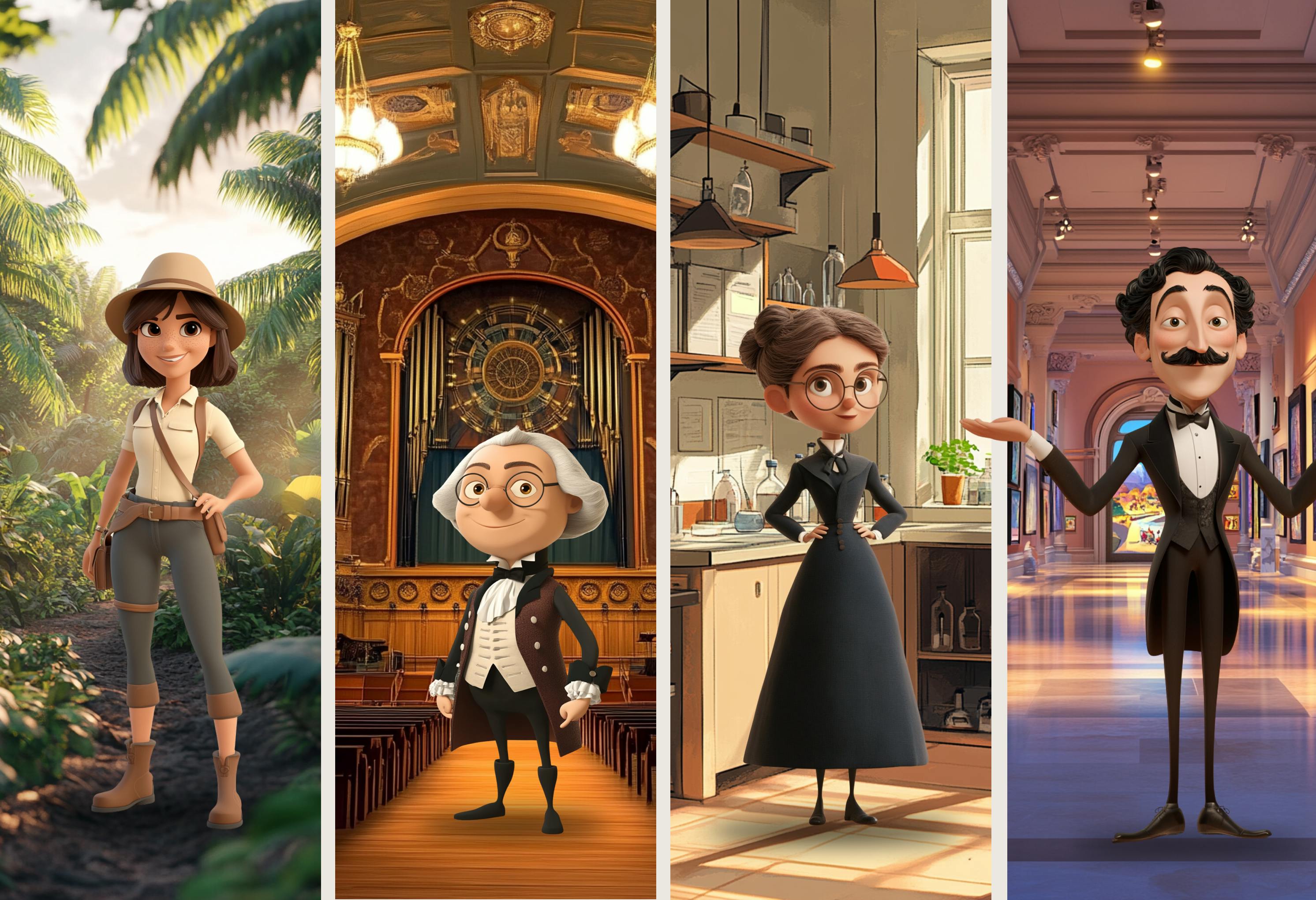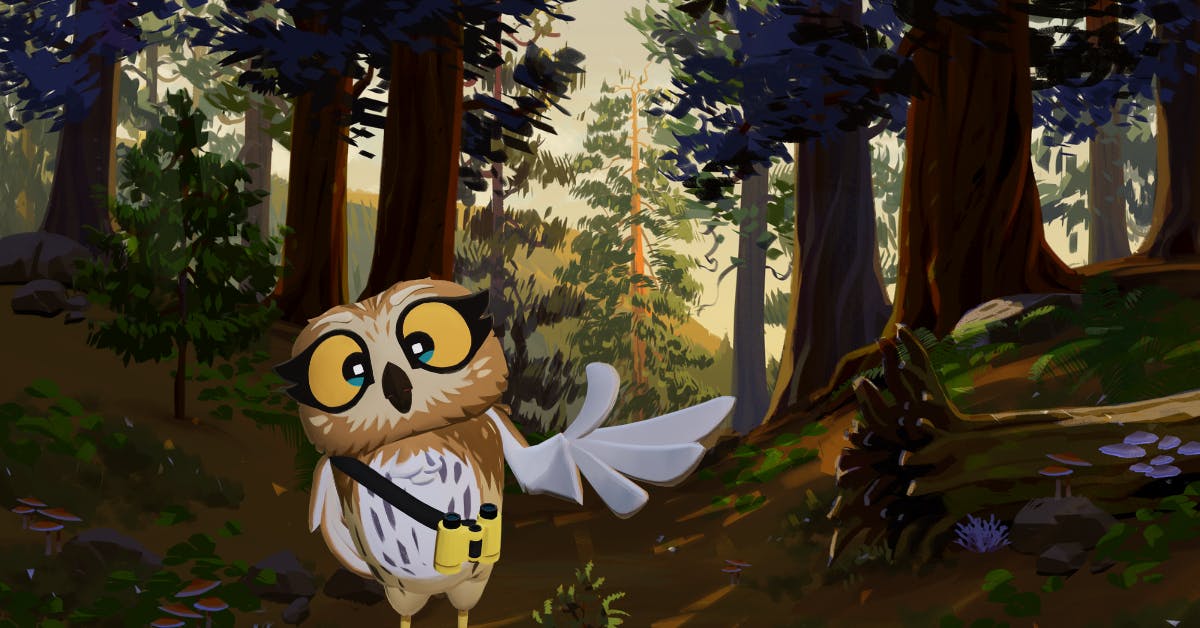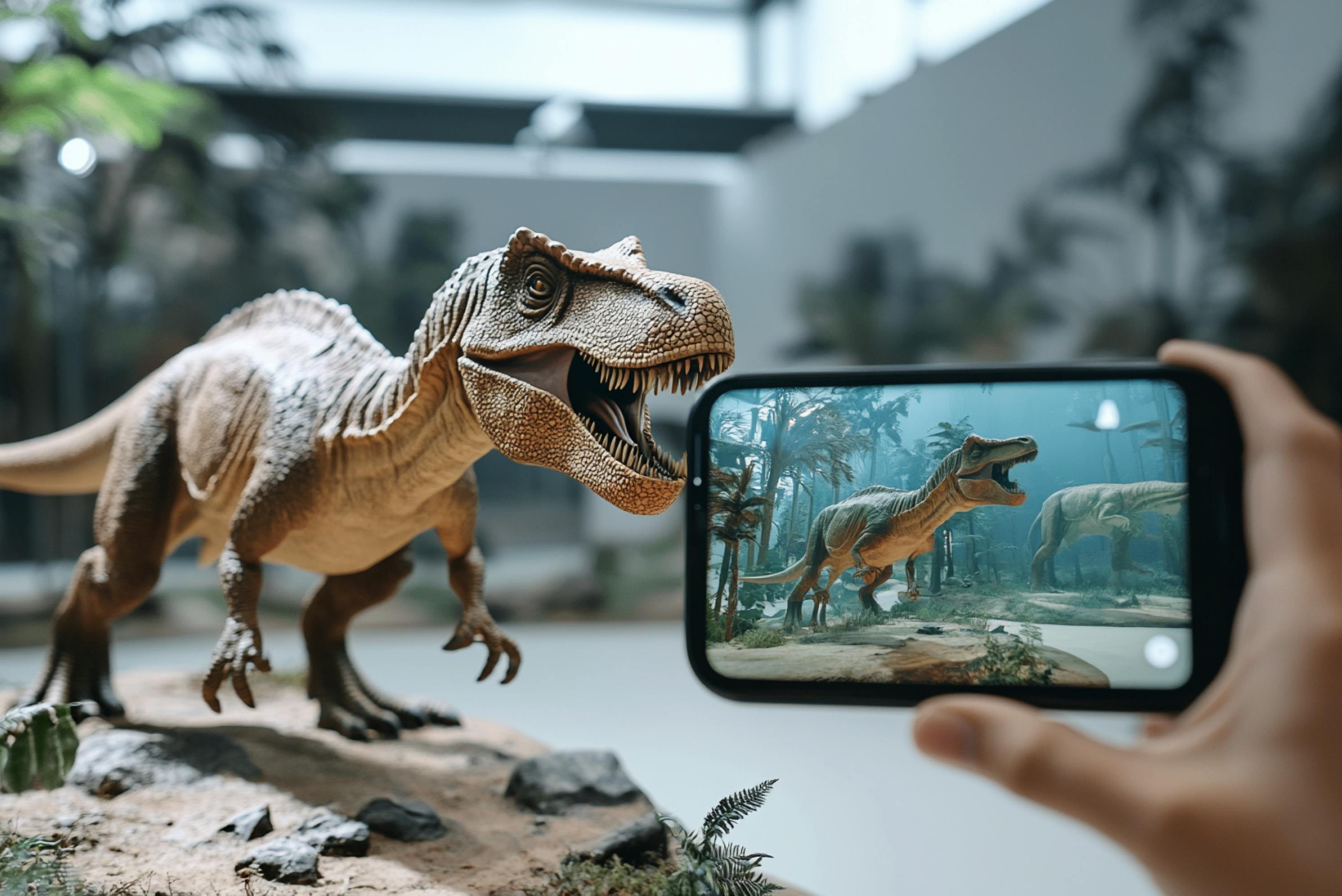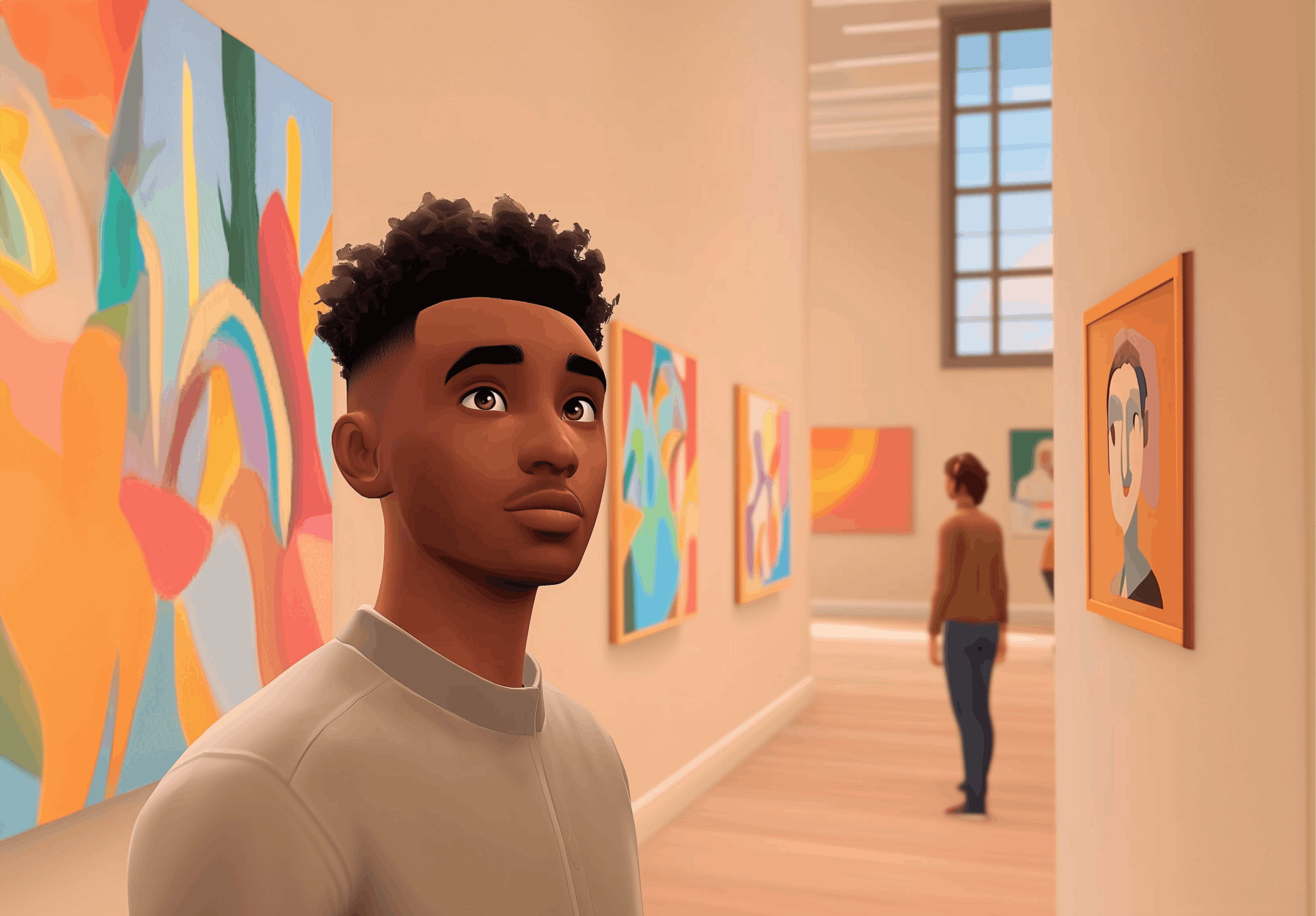Add AI characters to your interactive exhibits
Integrate AI characters into your interactive exhibits for more educational and immersive exhibitions. Whether you add a historical figure to your science center exhibit or a friendly animal to greet guests at the zoo, AI characters are the future of museums and a great way to better engage and educate visitors of all ages.
Get started with Inworld

Why Inworld?
Why AI characters in interactive exhibits?
- Immersive and interactive experiences: Learning about history, art, science, or animals comes to life when you add AI characters to interactive experiences.
- Spatial storytelling: See AI as another medium to tell your exhibit’s story via augmented reality or cleverly integrated interactive displays.
- Gamification: Add interactive games to your exhibition with AI characters.
- Additional revenue streams: Charge for access to an augmented reality tour guide or app or get your AI character experience sponsored by a corporate donor.

Ways to use
3 ways to use AI characters in an interactive exhibit
- Augmented reality museum app: Leverage web-based AR technologies or create an augmented reality museum app that guides guests on tours.
- Exhibition interaction displays: Leverage interactive kiosks, displays, or walls as interfaces for guests to interact with AI characters to learn more about the exhibit.
- Interactive online exhibition: Extend your exhibit into the world via an interactive online exhibit with AI characters. Charge to access it or allow visitors to join for free.

Use cases
Types of interactive exhibits with AI characters
- Interactive art exhibit: Leverage AI docents and AI artists to share details about the art and artists with visitors. Ensure everyone has a guided tour.
- Interactive museum exhibit: Use AI historians to offer in-depth explanations of artifacts and significance. Or AI historical figures to recreate events.
- Interactive science exhibit: Cast AI scientists to provide detailed explanations of complex theories and answer questions to make science more accessible.
- Interactive dinosaur exhibit: Integrate AI paleontologists and AI dinosaurs to make the past come alive with details about species, habitats, behaviors, or the latest dinosaur discoveries.
- Interactive zoo exhibit: Add AI zookeepers to exhibits to share information about the care, habits, and habitats of different species and AI animals to interact with visitors.
- Interactive aquarium exhibit: Create AI marine biologists that can discuss ecosystems, species, and conservation or AI sea creatures to simulate behaviors and environments.
- Interactive music exhibit: Add AI musicians to explore the history, theory, and performance of music.

Museum futures
AI and museums: The next frontier of museum technology
- Future of museums: Stay at the forefront of museum innovation by experimenting with new technologies and strategies for increasing engagement.
- Integration with other technologies: Integrate AI into existing technology experiments by adding it into virtual exhibits, augmented reality museum tours, and interactive kiosks and displays.
- Experiential museum visits: Build an experiential museum by ensuring that every museum visit is interactive, experiential, and fun with AI character interactions.
Frequently asked questions
How has technology changed museums?
Technology has transformed museums by enhancing visitor engagement through interactive art exhibits, virtual tours, digital collections, and immersive experiences. The move towards more digital and immersive museums and technology innovation have driven museums to reach global audiences and provide educational content remotely.
The future of museums is expected to see the marriage of AI and museums. For example, AI characters are set to make museums even more engaging by allowing for interactive exhibits where the artists or historical figures are part of the exhibit and can answer questions!
How do museums leverage technology?
Museums leverage technology in various ways, such as interactive displays, virtual reality (VR) and augmented reality (AR) experiences, digital archives, online exhibitions, experiential museum exhibits, and mobile apps. These technologies represent the future of museums and are set to enhance visitor interaction, learning, and accessibility. More museums are also leveraging AI. One way to create engaging museum artificial intelligence interactions is via AI characters used in virtual reality, augmented reality, and interactive displays that allow museum patrons to speak to the historical figures at the heart of the display.
What are interactive exhibitions?
Interactive exhibitions are displays or installations in museums that require visitor participation. They often involve touch-sensitive screens, motion sensors, or AI-driven elements that respond to visitor actions, providing a dynamic and engaging experience. Many interactive exhibitions are now focused on creating artificial reality museum installations that include things like AI characters or historical figures.
What is an interactive display in a museum?
An interactive display in a museum refers to a digital interface that allows visitors to actively engage with content. This could include touchscreens for exploring artifacts, interactive art exhibits, interactive maps, games, simulations, or AI-driven characters that can interact with visitors.
How can I make my exhibition more interactive?
To make an exhibition more interactive, consider incorporating touchscreens or tablets for exploring content, interactive projections, QR codes linking to additional information, VR stations for immersive experiences, or AI-driven characters that respond to visitor queries or provide guided tours.
Why are interactive exhibits important?
Interactive exhibits are crucial for the future of museums as they stimulate visitor curiosity, promote active learning, cater to diverse learning styles, and enhance overall visitor satisfaction. They encourage deeper engagement with museum content and make learning more accessible and enjoyable.
For example, an interactive exhibit at a science center could include an AI character playing the role of the scientist who made the big discovery that’s being demonstrated. That character could answer questions and share additional information, making the experience even more educational.
What makes an exhibition immersive?
An immersive exhibition captivates visitors by creating a multisensory experience that transports them into another world or time period. Elements such as realistic simulations, interactive museum exhibits, lifelike AI characters, spatial audio, and interactive storytelling contribute to immersion.
What makes a good virtual exhibition?
A good virtual exhibition combines high-quality visuals, informative content, intuitive navigation, and interactive museum exhibit elements such as 360-degree views, virtual tours guided by AI characters, interactive timelines, and opportunities for visitor feedback or participation.
How is augmented reality used in museums?
Augmented reality (AR) in museums enhances visitor experiences by overlaying digital content onto the physical environment. Often in the form of an augmented reality museum app, it can provide additional information about artifacts, animate historical scenes, offer virtual guides or AI characters, and create interactive learning experiences.
How can AR be used in exhibitions?
AR can be used in exhibitions to superimpose digital reconstructions of artifacts, create virtual tours with AI guides, offer interactive quizzes or games related to exhibits, simulate historical events, or allow visitors to view hidden details or layers of an artifact through their devices. Often created by museums in the form of an augmented reality museum app, AR represents the future of museums interactive displays and exhibits.